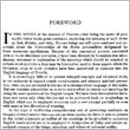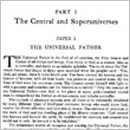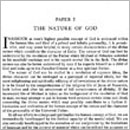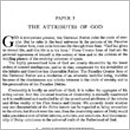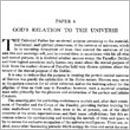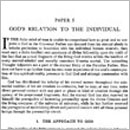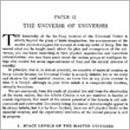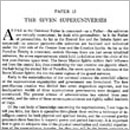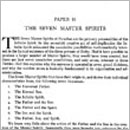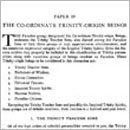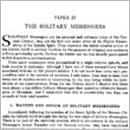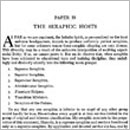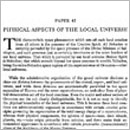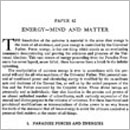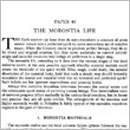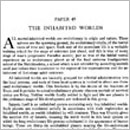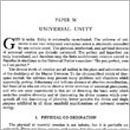I. The Central and Superuniverses & II. The Local Universe
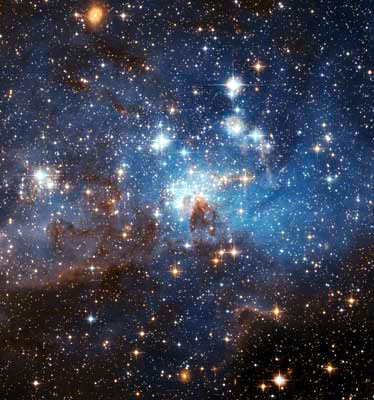
Part I is stunningly original in its presentations of the Trinity, the layout and organization of the universes, and the hierarchy of beings who inhabit and administer them. In most of the papers of this Part, the Bible is the only apparent reference, paraphrased passages of which stud the narratives. Modern sources come into play in the Foreword and in Papers 1-5, 12, 15, 16 and 19. The Doctrine of God (1931), by liberal Protestant theologian Albert C. Knudson, was the most-used source for the first five papers; astronomer Robert H. Baker’s The Universe Unfolding (1932) was used in Papers 12 and 15.
Part II is similarly original in its theology, cosmography and angelology. As in Part I, Bible passages and themes are regularly referenced. Only in Papers 41, 42, 48 and 56 were modern sources used extensively. A. S. Eddington’s Stars and Atoms (1927) and two books by Sir James Jeans (The Universe Around Us and Through Space and Time) were used in Papers 41 and 42. The twenty-eight statements of human philosophy listed in section 7 ("Morontia Mota") of Paper 48, were drawn, in virtually consecutive order, from The New Dictionary of Thoughts, an American compilation of quotations that went through many editions in the nineteenth and twentieth centuries.

